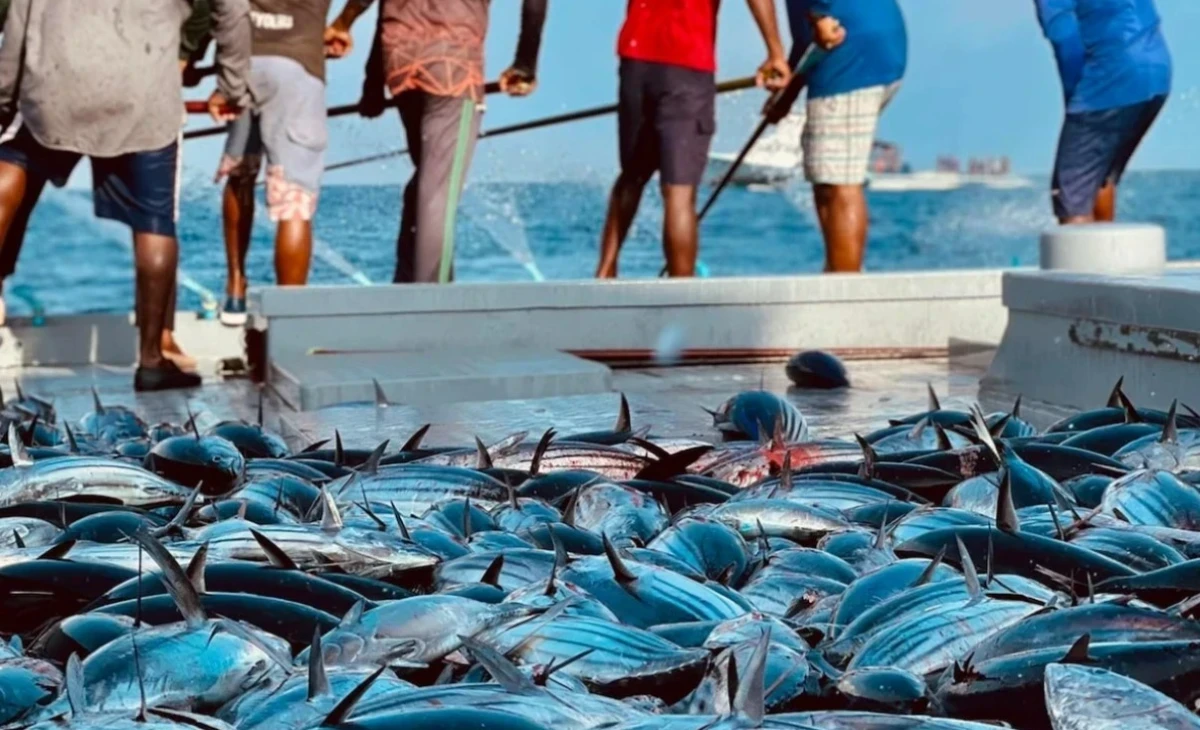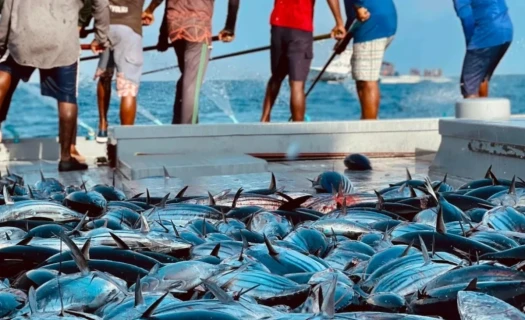Sat, 08 Nov 2025
|DHIVEHI
Fish exports soar 91.8% as Maldives’ fisheries sector experiences robust growth
08 Nov 2025
|

A group of fishermen catch fish --- Photo: Thaa Guraidhoo Masverin
Fish exports in the Maldives have surged by 91.8 per cent in the first nine months of 2025 compared to the same period last year, according to the Maldives Monetary Authority’s (MMA) Monthly Statistics report for October.
From January to September this year, total fish exports reached 61,452.3 metric tonnes, up from 32,042.4 metric tonnes recorded in 2024. Fresh, chilled or frozen tuna made up the largest share of exports, followed by canned or pouched fish, and other chilled or frozen fish excluding tuna.
The report also shows a strong rise in fish purchases by processing companies, increasing by 75.9 per cent from 39,684.5 metric tonnes in 2024 to 69,786 metric tonnes in the same period this year. Of this, skipjack tuna accounted for 58,768.7 metric tonnes, yellowfin tuna for 10,699.8 metric tonnes, and other fish species for 318 metric tonnes. Skipjack tuna purchases recorded the sharpest growth, rising 88.3 per cent year-on-year.
The fishing industry’s growth has been attributed to the Government’s renewed focus on strengthening the sector. Since 10 December last year, the Government has been depositing payments to fishermen within 48 hours of sale, fulfilling a key presidential pledge by President Dr Mohamed Muizzu.
Timely payments have encouraged many fishermen who had left the industry due to financial constraints to return, leading to an increase in fishing vessels and active fishermen. The Government has also recognised fishing as a formal occupation and established a National Fishermen’s Register, enabling access to financial services through the banking system.
Further initiatives are underway to expand infrastructure for the sector, including new ice plants, processing factories, and cold storage facilities. Collectively, these policies have revitalised the fisheries industry, boosting production, profitability, and long-term sustainability.


Popular News







